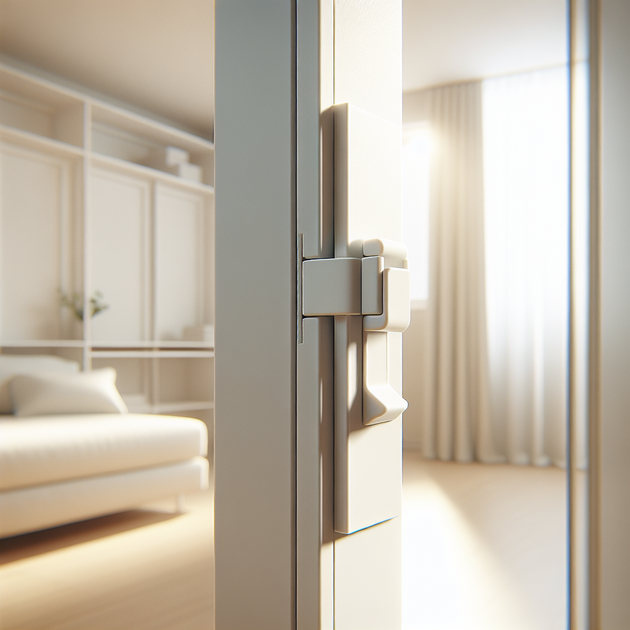Is your storage closet off-limits—but your cat just won’t take the hint? It turns out that a simple “compliant latch” can be a clever fix for keeping a sliding door securely shut. Many people are looking for ways to make their homes a little more pet-proof without adding bulky hardware or drilling holes in their doors. Here’s how one creative maker solved the problem—and how you can try it yourself.
What Is a Compliant Latch?
A compliant latch is basically a flexible bit of plastic (or another material) that holds something in place through its natural “springiness.” Instead of using complicated mechanisms or magnets, the design relies on the material itself to bend and snap back into position. In this case, it’s used to stop a sliding closet door from being nudged open by nosy cats.
The idea is simple: attach a small stick-on piece just where the door meets the frame. When you slide the door shut, it bumps into this latch and stays put. If you want to open the door, just press gently with your finger—the flexible latch moves aside easily.
How Does This Latch Work?
The magic is all in the design. Most compliant latches are made using 3D printing or by cutting flexible materials such as plastic or rubber sheet. The key features:
- Springy action: The latch bends when pushed but springs back when released.
- No permanent damage: No need to drill holes or use screws—most attach with double-sided tape.
- Pet-resistant: Cats may be smart but usually don’t have the thumb power or patience to push past this kind of latch.
- User-friendly: Adults (and even kids) can open it one-handed by applying gentle pressure.
This type of solution is especially handy for renters or anyone who doesn’t want to alter their doors permanently. Plus, if you ever need to remove it, there’s very little mess left behind.
The DIY Approach: Making Your Own Compliant Latch
Building your own compliant latch for a sliding door is easier than it sounds—even if you don’t have much experience with tools or crafts. The most popular method uses a 3D printer, since you can precisely control thickness and flexibility in the design.
Here’s what you need:
- A bit of flexible plastic (like PLA+ or PETG if using a home 3D printer)
- A simple CAD file for the latch—many makers upload free models on platforms like Printables
- Double-sided foam tape (for sticking it onto the frame)
- A ruler and pencil (for positioning)
You’ll want to print or cut out a small tab (about finger-width) that sticks out just enough to stop the sliding motion but not so much that it’s hard to push aside. Attach it at shoulder height so adults can reach easily—outsmarting both kids and cats!
If you don’t have access to a printer, consider bending a thin strip of plastic packaging or even an old loyalty card as a quick hack. Just make sure whatever material you use has enough give to flex back into shape after each use.
A Real-Life Fix That Works
One Reddit user named Eraknelo shared their own experience after getting fed up with their cats breaking into the storage closet again and again. Instead of buying expensive hardware or locking devices, they designed a stick-on compliant latch that could be installed in minutes without special tools.
The description makes it sound like magic—the door “slams right into it,” but opening up is still easy with just gentle finger pressure. Watching someone operate one on video might look tricky (it really isn’t), but after trying it once or twice most people get the hang of it fast.
If you’re interested in other creative uses of flexible plastics around the house—from cable management clips to child safety locks—sites like Make: are full of inspiration.
Why Try A Compliant Latch For Sliding Doors?
Here are some reasons why this little project might be worth your time:
- Keeps pets (and sometimes children) out of restricted spaces
- No need for power tools or permanent modifications
- Takes less than half an hour from start to finish
- Easily removable if you move or change your mind
- Satisfying “snap” feeling when closing the door!
A friend once joked that their cat had figured out every trick except this one—the feline would paw at the bottom corner all day but never managed to get through. It might not be completely foolproof against determined pets (nothing ever is), but it definitely adds an extra layer of protection without making life harder for humans.
So if you’re tired of finding furballs hiding among your winter coats—or just looking for an excuse to try out your new printer—why not give this little upgrade a shot?
What other clever fixes have helped keep your home organized (and pet-free)? Let us know!

Leave a Reply